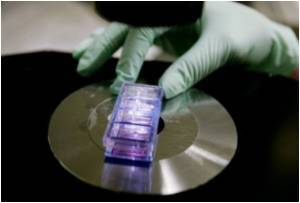Local anesthetic mixed with magnetized ‘ferrofluids’ provide a novel way to prevent a rare but serious complication of spinal anesthesia, report scientists.

Magnetic Technique May Permit Gravity-Defying Anesthesia
Although very rare—occurring at a rate of about 0.6 per 1,000 cases—high spinal block is a serious complication of spinal anesthesia. It occurs when injected anesthetics travel too high in the spinal cord, interfering with the spinal cord fibers governing heart function. This can result in sharp drops in heart rate and blood pressure, with a risk of cardiac arrest and death.
Anesthesiologists currently prevent high spinal block by modifying the anesthetic dose and by positioning the patient so that gravity distributes the anesthetic to the lower portions of the spinal cord. "However, in certain instances, gravitational forces alone may not be sufficient to control block height," the researchers write. They evaluated a different approach: using magnetized anesthetic fluid and a weak magnetic field to control the spread of fluids.
Dr. Thiele and colleagues created a simple model of the spine using fluid-filled plastic tubing. They then prepared a local anesthetic solution with or without the addition of a water-based ferrofluid to magnetize the fluid. In this model, both fluids ran downward by gravity.
However, when a magnet placed outside the tubing, below the level of the needle, it halted the downward flow of magnetized fluid. In fact, when the magnet was moved, the fluid moved "uphill," against gravity.
Advertisement
Of course, much more research is needed before a concept demonstrated in plastic tubing can be applied in patients. Among the questions to be answered is the safety of the magnetic fluid—the ferrofluid used in the experiments is not approved for use in humans, although magnetic particles are used in other medical treatments.
Advertisement
Source-Eurekalert










